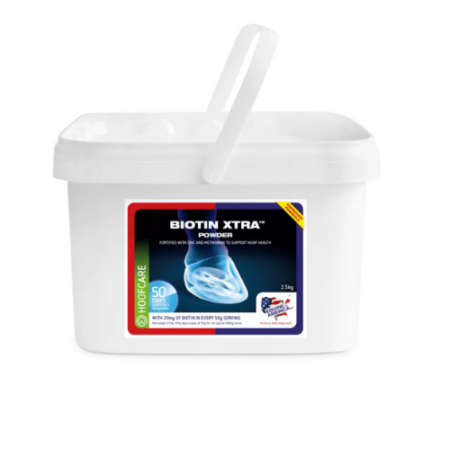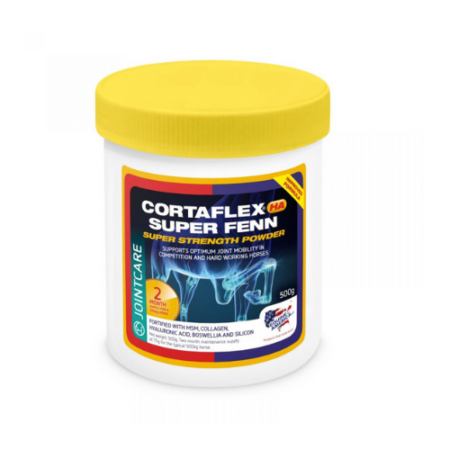Description
Designed to help support a healthy stomach: foregut and hindgut health and acid balance, and gastric secretions for optimal gastro- intestinal health.
Designed to help create a healthy appetite and improved feed efficiency for maximum nutritional uptake from feed. Beneficial for “picky” eaters and horses off food. Adds condition and lustrous shine to coat. For balanced behaviour in stressful environments.
Use in accordance with Industry Rules or consult with your veterinarian. WITHHOLD ONE CLEAR DAY OF RACING. BetaVet Ltd for innovative formulae developed from the latest research and traceable quality assured ingredients.
CONTENTS:
Proprietary blend of Lithothamnion red marine algae, Centella asiatica herb, Glycyrrhiza glabra root and Matricaria chamomilla flowers.
Contains vegetable glycerin
DOSE RATES:
-
Add to feed
-
Pony: 20ml twice daily, Maintenance dose 20ml daily
-
Horse: 30ml twice daily, Maintenance dose 30ml daily
Factors Shown to Contribute to Equine Gastric Syndromes
-
Intense exercise within 4 hours of a meal when acid secretion is at its peak.
-
Strenuous exercise causing temporary increases in stress hormones, changes in fluid and electrolyte balance, and a reduction in blood flow to the gut.
-
High grain diets; intermittent feeding; periods of fasting.
-
Transport, especially over long distances.
-
Housing away from home; immaturity/inexperience.
-
Frequency of training and racing.
-
Temperament and nervous disposition.
Pilot Study
A recent veterinarian supervised pilot study showed promising results in horses using the poly herbal formula Herbazole™ to improve overall gut health to help support post treatment with standard prescribed protocols. The study used a proprietary blend of botanical extracts in the maintenance of gastric health using a dose of 30ml twice daily for two months. Horses were scoped prior to the study, midway through and at two months. All horses were in full training. Trainers trialling Herbazole™ felt that it was well received by the horses for palatability and commented that the demeanour of the horses seemed more relaxed. Whilst this pilot study yielded promising results in the support and management of gastric conditions, the greater potential is in supportive post-prescribed treatments for gastric health .There is also potential for conjunctive use with prescribed NSAIDs ( non steroidal anti inflammatory drugs)where the formulation’s actions support the body to help manage inflammation, support healing via strengthening the mucosal barrier and overall support of the microbiome.
Key Botanicals for Equine Gastric Health
Chamomile – Matricaria recutita
One of the most widely used herbs with an exceptionally long history of use from ancient times to support the body with indigestion, flatulence along with its well known action as a mild calming herb. In the digestive system chamomile acts to support the anti- inflammatory responses of the body which helps to relieve discomfort and relax the smooth stomach muscles. It is an ideal herb to use to support upset digestion as well as calming and assisting healthy digestive tissue.
Gotu Kola – Centella asiatica
Most research on Gotu kola has focused on the triterpene saponins. Numerous studies using the triterpene saponins have demonstrated efficacy to support the body in wound healing. Gotu Kola has been shown to support the body with healing time as well as reducing scar formation. A number of studies have also shown Gotu Kola extract to support connective tissue and content. Of additional interest is the effect Gotu Kola has on vein walls where its supportive effects on collagen production is beneficial for vein damage.
Studies have also suggested Gotu Kola may be of benefit in the recovery phase of gastric conditions where its use appears to support the gastric mucosal barrier.
Licorice – Glycyrrhiza glabra
Licorice root has a long history of use as a medicinal plant dating back to ancient Egyptian, Roman and Greek times as well as the 2nd to 3rd century BC in ancient China. It has a historical use as support for gastric and duodenal conditions. Licorice derived compounds have demonstrated an ability to support gastrointestinal mucus secretion and prostaglandin concentrations which are known to extend the life of surface cells in the stomach.
Lithothamnion species
Lithothamnion species is found in just three locations in the world, including the south-west coast of Ireland and Iceland. During its growth phase, these algae absorb essential minerals from the sea. The algae then break down naturally and settle on the sea bed. The calcified skeletal remains are harvested, washed, dried and milled to produce a product that is rich in calcium, magnesium and 74 other trace minerals including zinc, iron and selenium. Lithothamnion has a buffering/supportive action on the stomach lining – this appears to be due to the slower release of bioavailable minerals, calcium, magnesium and silicon.
Designed to help create a healthy appetite and improved feed efficiency for maximum nutritional uptake from feed. Beneficial for “picky” eaters and horses off food. Adds condition and lustrous shine to coat. For balanced behaviour in stressful environments.
Use in accordance with Industry Rules or consult with your veterinarian. WITHHOLD ONE CLEAR DAY OF RACING. BetaVet Ltd for innovative formulae developed from the latest research and traceable quality assured ingredients.
CONTENTS:
Proprietary blend of Lithothamnion red marine algae, Centella asiatica herb, Glycyrrhiza glabra root and Matricaria chamomilla flowers.
Contains vegetable glycerin
DOSE RATES:
-
Add to feed
-
Pony: 20ml twice daily, Maintenance dose 20ml daily
-
Horse: 30ml twice daily, Maintenance dose 30ml daily
Give twice daily for two months or as recommended by your veterinarian. For industry rules please consult with your veterinarian.
Factors Shown to Contribute to Equine Gastric Syndromes
-
Intense exercise within 4 hours of a meal when acid secretion is at its peak.
-
Strenuous exercise causing temporary increases in stress hormones, changes in fluid and electrolyte balance, and a reduction in blood flow to the gut.
-
High grain diets; intermittent feeding; periods of fasting.
-
Transport, especially over long distances.
-
Housing away from home; immaturity/inexperience.
-
Frequency of training and racing.
-
Temperament and nervous disposition.
Pilot Study
A recent veterinarian supervised pilot study showed promising results in horses using the poly herbal formula Herbazole™ to improve overall gut health to help support post treatment with standard prescribed protocols. The study used a proprietary blend of botanical extracts in the maintenance of gastric health using a dose of 30ml twice daily for two months. Horses were scoped prior to the study, midway through and at two months. All horses were in full training. Trainers trialling Herbazole™ felt that it was well received by the horses for palatability and commented that the demeanour of the horses seemed more relaxed. Whilst this pilot study yielded promising results in the support and management of gastric conditions, the greater potential is in supportive post-prescribed treatments for gastric health .There is also potential for conjunctive use with prescribed NSAIDs ( non steroidal anti inflammatory drugs)where the formulation’s actions support the body to help manage inflammation, support healing via strengthening the mucosal barrier and overall support of the microbiome.
Key Botanicals for Equine Gastric Health
Chamomile – Matricaria recutita
One of the most widely used herbs with an exceptionally long history of use from ancient times to support the body with indigestion, flatulence along with its well known action as a mild calming herb. In the digestive system chamomile acts to support the anti- inflammatory responses of the body which helps to relieve discomfort and relax the smooth stomach muscles. It is an ideal herb to use to support upset digestion as well as calming and assisting healthy digestive tissue.
Gotu Kola – Centella asiatica
Most research on Gotu kola has focused on the triterpene saponins. Numerous studies using the triterpene saponins have demonstrated efficacy to support the body in wound healing. Gotu Kola has been shown to support the body with healing time as well as reducing scar formation. A number of studies have also shown Gotu Kola extract to support connective tissue and content. Of additional interest is the effect Gotu Kola has on vein walls where its supportive effects on collagen production is beneficial for vein damage.
Studies have also suggested Gotu Kola may be of benefit in the recovery phase of gastric conditions where its use appears to support the gastric mucosal barrier.
Licorice – Glycyrrhiza glabra
Licorice root has a long history of use as a medicinal plant dating back to ancient Egyptian, Roman and Greek times as well as the 2nd to 3rd century BC in ancient China. It has a historical use as support for gastric and duodenal conditions. Licorice derived compounds have demonstrated an ability to support gastrointestinal mucus secretion and prostaglandin concentrations which are known to extend the life of surface cells in the stomach.
Lithothamnion species
Lithothamnion species is found in just three locations in the world, including the south-west coast of Ireland and Iceland. During its growth phase, these algae absorb essential minerals from the sea. The algae then break down naturally and settle on the sea bed. The calcified skeletal remains are harvested, washed, dried and milled to produce a product that is rich in calcium, magnesium and 74 other trace minerals including zinc, iron and selenium. Lithothamnion has a buffering/supportive action on the stomach lining – this appears to be due to the slower release of bioavailable minerals, calcium, magnesium and silicon.





